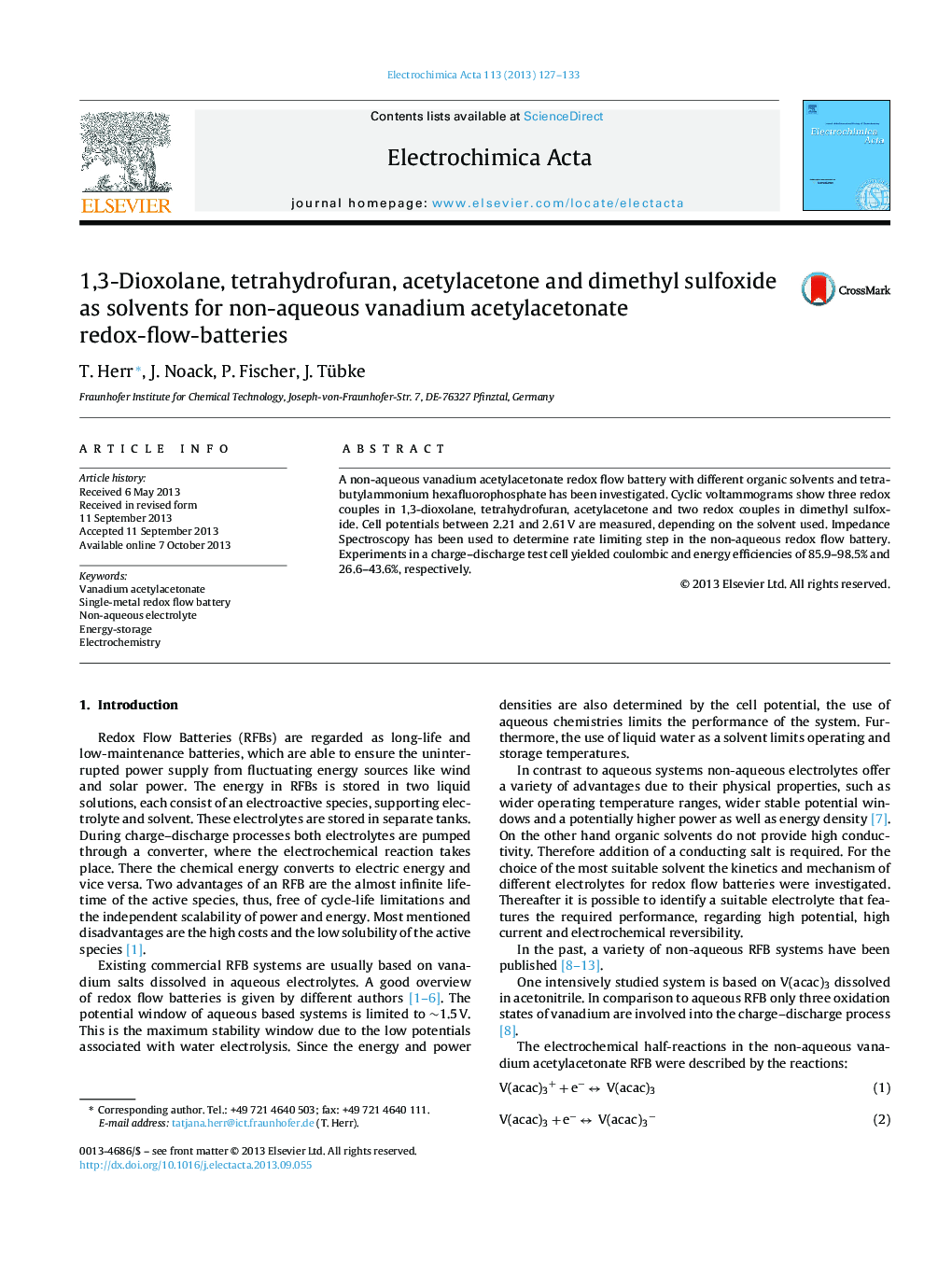| Article ID | Journal | Published Year | Pages | File Type |
|---|---|---|---|---|
| 6614606 | Electrochimica Acta | 2013 | 7 Pages |
Abstract
A non-aqueous vanadium acetylacetonate redox flow battery with different organic solvents and tetrabutylammonium hexafluorophosphate has been investigated. Cyclic voltammograms show three redox couples in 1,3-dioxolane, tetrahydrofuran, acetylacetone and two redox couples in dimethyl sulfoxide. Cell potentials between 2.21 and 2.61Â V are measured, depending on the solvent used. Impedance Spectroscopy has been used to determine rate limiting step in the non-aqueous redox flow battery. Experiments in a charge-discharge test cell yielded coulombic and energy efficiencies of 85.9-98.5% and 26.6-43.6%, respectively.
Keywords
Related Topics
Physical Sciences and Engineering
Chemical Engineering
Chemical Engineering (General)
Authors
T. Herr, J. Noack, P. Fischer, J. Tübke,
